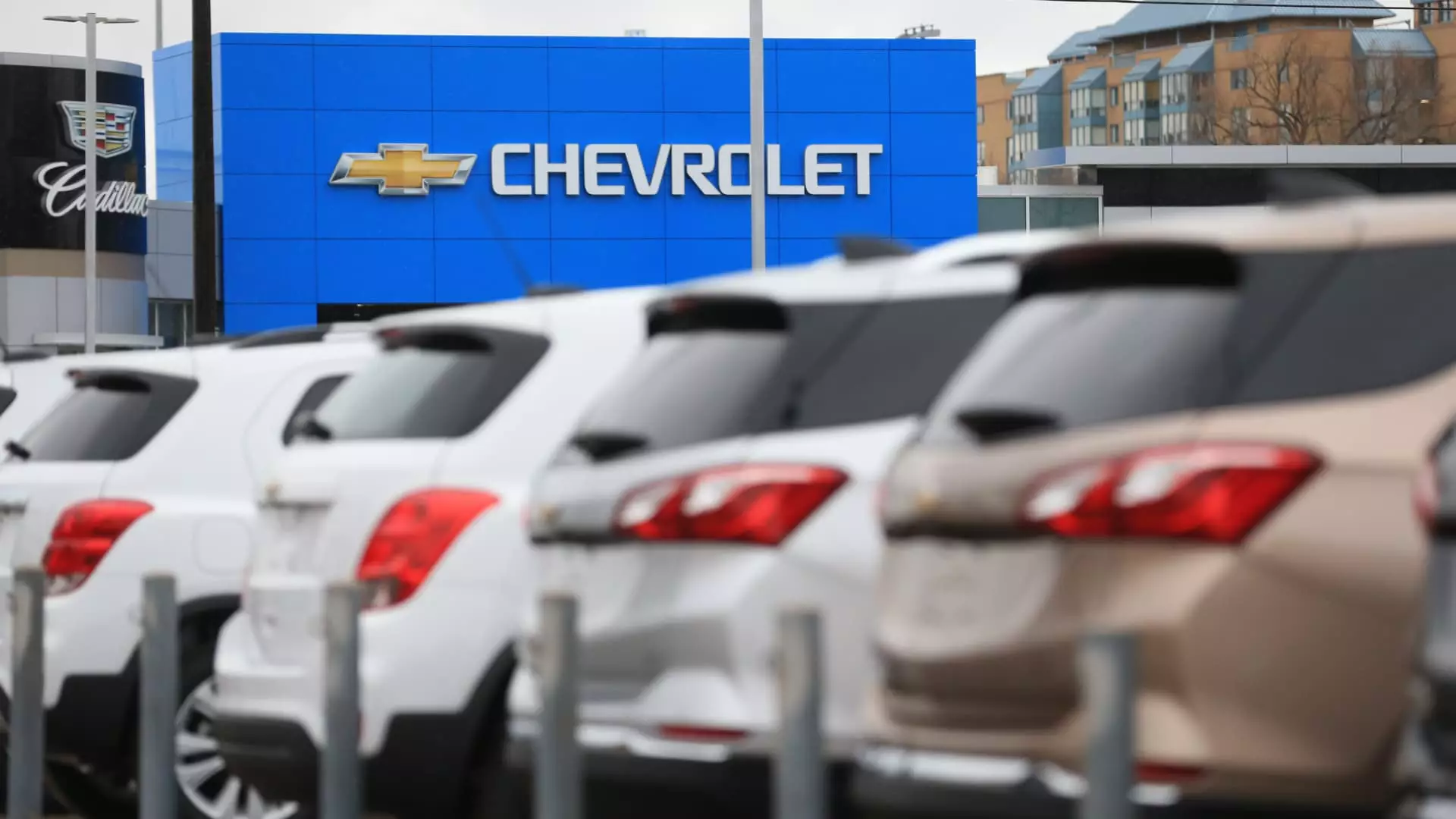The automotive industry is riding a wave of unexpected buoyancy, with major players like General Motors reporting a striking 16.7% increase in vehicle sales in the first quarter compared to the previous year. This growth comes at a time when President Donald Trump’s impending auto tariffs loom ominously over the sector, threatening to reshape the landscape in a significant way. It raises the question: are consumers acting out of panic or optimism in the face of changing economic conditions?
Such a sharp rise in sales is not merely a reflection of market strength; it’s a tactical response by consumers rushing to make purchases before potential price hikes linked to these tariffs take effect. This tactical buying behavior underscores a vulnerability prevalent in modern capitalism – consumers feel their wallets are at the mercy of government policy, leading to preemptive buying sprees that ultimately skew the short-term perspective of market health.
Electrification: A Beacon of Hope
Notably, GM’s success is attributed largely to its newly launched all-electric vehicles, emphasizing the industry’s pivot towards sustainability. The Cadillac Escalade IQ and Optiq are not just vehicles but symbols of a transformative shift within the automotive sector. Despite looming tariffs, the demand for electric vehicles appears to outpace traditional auto models, reinforcing the argument for a progressive, environmentally-focused automotive policy. Yet, the question remains whether this shift is sustainable or simply a reaction to the immediate circumstances brought about by economic policies.
On the other hand, competitors like Hyundai and Honda have also reported encouraging gains of 10% and 5.3% respectively, indicating a buoyant market dynamic that transcends current troubles. However, the underperforming Ford, showing a 1.3% decline, highlights the risks of stagnation in innovation as it pivots away from models like the Ford Edge.
The Price of Protectionism
The looming tariff, which includes a staggering 25% levy on imported vehicles set to commence soon, represents a dangerous gamble for the industry. While it aims to protect domestic auto manufacturing, it threatens to raise vehicle prices exponentially for consumers, potentially crippling any short-term gains reported in sales. Such measures often expose crumbling foundations beneath the surface of apparent industry strength. The question then becomes whether the surge in sales will possess any staying power once the consumer bubble bursts as the consequence of higher prices materializes.
The reliance on tariffs to modulate market dynamics is reminiscent of trying to patch a sinking ship with duct tape. The automotive industry, beset by uncertainty and fluctuation, may find that consumer behavior quickly shifts from frantic buying to reluctance when tariff-induced price hikes occur. As consumer confidence starts to wane, the transient sales bounce could quickly devolve into an economic downturn, leading to an industry-wide stagnation.
The Road Ahead
With analysts like Thomas King echoing caution over the long-term implications of Trump’s tariffs, the automotive sector stands at a crossroads. Industry leaders must navigate the choppy waters of resources, consumer expectations, and technologic advancement without faltering. If the focus remains entrenched in immediate profit, the potential to innovate and adapt may be sacrificed—putting everything at risk in an industry already known for its cyclical volatility.
In this landscape, companies need not only respond to presidential policies but also actively promote a forward-thinking approach that prioritizes sustainability and innovation. The potential of electric vehicles holds the key to transforming the narrative from one of fear to one of hopeful anticipation. The question then is: will the industry rise above the storm of tariffs and turn toward a brighter, more sustainable future?


Leave a Reply